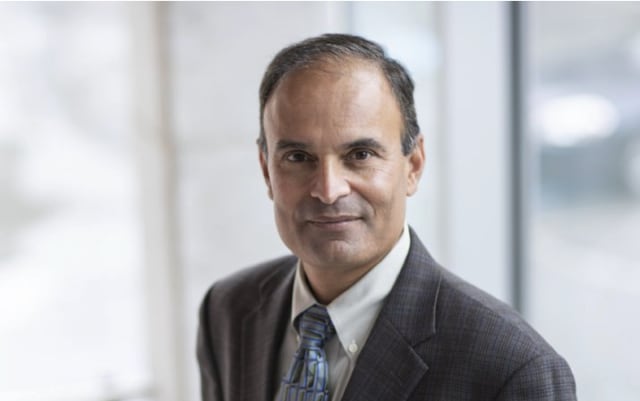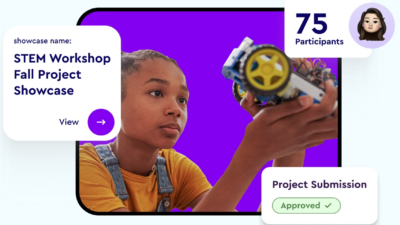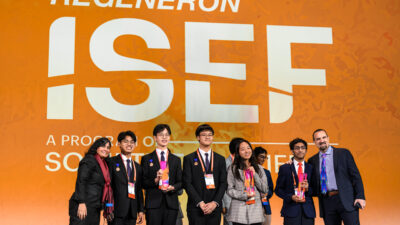Case Western engineering dean Ragu Balakrishnan discusses the shared challenge of engineers and their educators, the importance of data literacy and patching leaks in the talent pipeline.
In this instalment of our Dean’s List interview series, engineering.com speaks with Venkataramanan “Ragu” Balakrishnan, the Charles H. Phipps Dean of the Case School of Engineering at Case Western Reserve University in Cleveland, Ohio.
Born in India, Balakrishnan earned a Bachelor of Technology degree in Electronics and Communication Engineering from Indian Institute of Technology Madras. He moved to the U.S. to pursue graduate studies at Stanford, where he obtained a master’s degree in electrical engineering in 1989, followed in 1992 by a master’s degree in statistics and a doctorate in electrical engineering. After two years of post-doctoral research at several institutions, in 1994 Balakrishnan joined the engineering faculty at Purdue University. During his time at Purdue, he served in several leadership roles, including associate dean of research for the college of engineering, and head of the electrical and computer engineering school.
Balakrishnan left Purdue in 2018, when he was appointed the dean of Case.
Among his primary research interests is the application of convex optimization to such engineering applications as robotics, signal processing and control systems. For his work in the latter, he was named a Fellow of the Institute of Electrical and Electronics Engineers (IEEE) in 2012.

The original transcript has been edited for clarity and brevity.
ENGINEERING.COM: What excites you most in the areas of computer engineering and computer science right now?
BALAKRISHNAN: We are at a point in technological evolution when memory and computation are plentiful and cheap. There has also been a veritable explosion in the availability of data. And the third big development is the rise of AI and machine learning, which allows you to apply large amounts of computation to large amounts of data to come up with insights that are simply amazing. That’s a revolution in the making we’re watching right now.
It brings us to the question of what the role of engineers is now. We will still solve problems, but we have to adapt quickly and use these new tools to solve what’s coming next. From an educator’s perspective, it challenges us as to what we should teach.
What do you think today’s engineers need to learn more about if they want to be successful?
The first thing that comes to mind is that engineers need to understand how to manipulate data and interpret the results. In fact, data literacy is not just for engineers, but for the entire student body. I would say that there should be a layer of basic data literacy for everybody, and then you can add a second layer of slightly more advanced data literacy for engineers, who can do a little bit more with it. And if you’re a computer scientist, then you go all the way, full bore. In any case, I think data sciences and analytics have become essential skills for all engineers. In the old days, who would do machine learning? The computer scientist. But we’ve hired a number of faculty over the past few years who use artificial intelligence as a companion in their own technical fields to come up with new insights and results that they could not have achieved before.
Technology is changing rapidly, and the rate of that change is increasing. So, everything is happening so fast that it is not a smart strategy to only be a specialist in one area. Of course, you should be able to dive deep and solve problems in one area. But you should be also able to go one level up in the hierarchy and look at the broader picture, take the lessons learned and the expertise gained in one particular application, and then translate it to other applications. You’d better be able to move around, or you run the risk of being stuck—perhaps even without a job.
You have a strong interest in the pedagogy of engineering. What do you believe are the best opportunities to improve how the discipline is taught?
I find it interesting to think about this in the context of how education has evolved. A long time ago, there was the Socratic method with a teacher and a few students. With the democratization of education, we had to scale up and become more efficient, so we came up with the notion of the classroom, with one teacher, many students and parallel content delivery. I’m dating myself here, but along came videotapes and people thought, if a lecture is on videotape, you just don’t have to go to class anymore. That didn’t quite happen. Now you have Coursera and EdX and so on – on any topic you pick, there is a beautiful lecture available on the web.
So the idea of using the classroom purely for content-delivery is dead, if all you are doing is giving a lecture that’s perhaps available in a better form elsewhere. So, the question is what does a classroom experience bring that’s beyond just content delivery? How do you leverage the classroom to get the maximum bang for the buck? People have tried many things, including flipped classrooms [a blended-learning model in which student devote in-class time to live problem solving and watch lectures online outside of class]. In any case, I’d say reinventing the classroom is an experiment in progress.
A second big challenge, especially in engineering, is making learning an interactive, collaborative experience, including hands-on activities. You can talk about data and artificial intelligence all you want, but in the end, engineers build things. They fix things. So how do you bring the hands-on experience into the curriculum early? How do you make sure students understand what happens when people work together in teams? Another challenge is the boundary condition of time. If a degree program is four years long, what do you change in order to fit these new things in?
What’s one way you’ve tried to address any of the challenges you just identified?
At the top of the list would be a new first-year course that we started specifically to address the fact that there was no hands-on introduction to engineering for our first-year students. Most engineering programs start by teaching basic math and science in a classroom. But the fun of doing engineering is lost in all of that.
In our new first-year course, students discover the fun of engineering by working in teams on short two-week modules taken from the various disciplines of engineering. This course also serves to educate students on what each discipline of engineering is like, and the interplay between them. They also learn a few hands-on skills like 3D printing and the like. And we include some fun competitions. Here’s an example: we give the students radio-controlled cars, but they have to design the wheels on their own, 3D-print their design, and then navigate an obstacle course with the cars. We give them open-ended problems like this which are often hard. Part of what we want to highlight is that it’s okay to fail because you learn something every time you fail.
We rolled out the course to the entire incoming class [of about 500 students] in fall of 2022. That’s one thing – you did ask for just one – I can say I am very proud of.
What’s the role of senior administrators or academics such as yourself in improving diversity, equity and inclusion within engineering education?
I’d start with education. People need to be aware of why diversity, equity and inclusion (DEI) are important. And of course, it’s an economic case as well as one of fairness and equity. Anybody would agree that the more talent you have around the table, the more smart people you’re able to attract to your profession, the better the outcomes are going to be. So, we need to make engineering attractive for everybody. This is easy to say but can be harder to do because we all have unconscious or implicit biases. One thing we have been doing, not only from my level but from the university level, is to sensitize faculty and staff to this notion of bias and things around that. So education and training are important.
Second, role models are important, and we have been working on improving diversity among the faculty. How? Well, faculty hiring is done by search committees, and search committees tend to reflect the current composition of the faculty. So we have intentionally diversified our search committees, instituting processes for that. We hired 18 faculty over the past couple of years, and fully half of them are from underrepresented groups, including six women and three African American men.
The third component is resources. If you intentionally allocate resources towards enriching the diversity of your faculty, then you can get critical mass. Once that happens, things actually catch fire.
And what about DEI initiatives aimed at the student body?
On the student side, things get a little tricky because there is a pipeline problem. It’s a challenge we cannot fight alone, but we can play a big role in helping.
There is a leak at the front of the pipeline. I’m talking about middle school and the elementary grades. There are economic inequities. I don’t want to be political, but in the U.S., there is inequity in funding education because funding tends to be local – there is no standardization. So, if you live in an affluent suburb, the high schools and elementary schools tend to be much better funded and have much better teachers and so on than under-resourced schools do. These inequities are a kind of hole that causes a leak.
So we try hard to compete to bring in the most diverse class at both the undergraduate and graduate levels. When students come into a university, a source of the leak could be that they don’t see a critical mass of other students like them. They feel isolated. We fight hard against it, but unless we are able to address the inclusion aspect of DEI, it all becomes a challenge. We do have university-wide as well as engineering-wide activities to promote inclusion.
The leaders of a lot of big U.S. technology companies are of South Asian descent. Does that make things a little bit easier for students of South Asian descent compared to, say, African-American students who see relatively few Black technology CEOs?
Absolutely. But what gets forgotten is the inherent advantages that people like me or [Microsoft CEO] Satya Nadella had, because we came to the United States from privilege, which most people don’t understand. People look at a foreign graduate student and say, oh, poor guy. Well, I came to the U.S. with a lot of inherent advantages that I enjoyed growing up in India.
All of the Indian CEOs serve as great role models for people of Indian descent. It’s great to have these people, and it does help a lot. It’s a tragedy that there isn’t a similarly high level of presence for underserved groups like African-Americans, and if you ask why, it goes back to missing privilege.
What do young people need to know before committing themselves to four years of engineering school?
Engineers change the world, to put it very in a grandiose way. Or to put it more mundanely, we solve practical problems. We use creativity, we use logic and we actually make problem-solving a science. What I mean is that when we solve a problem, the approach we use is systematic, and works not only for the specific problem we solved, but can also be broadened and generalized so that we can address other similar problems and beyond. And if it doesn’t sound glamorous, I’d say the results speak for themselves. Anything you can think of over the past couple of hundred years or so that has changed the way we live – transportation, communication, healthcare, etc. – probably has engineering playing a lead or strong supporting role in it. In fact, it’s hard to think of advances where engineers did not have a role to play. Engineering is a great profession to be in!
So, if you’re wondering whether engineering is right for you, the first thing you need to ask yourself is, “Do I like solving problems? Do I want to contribute and make a difference?” Creativity is a big part of all of this, so do you have a creative spark in you?
But you should also be comfortable with the quantitative side of things, and to be able to think somewhat abstractly with mathematical representations of real-life systems. In other words, you need the ability to understand the world via mathematical and scientific models.
Another aspect is that most solutions these days require the coming together of multiple disciplines, so do you like working in teams? Do you communicate well?
If these things sound like fun, then be an engineer.
What would be your key message to someone graduating today?
We promised that you’d be equipped with skills to change the world. Here’s your chance. If there is a time in your life when you can take risks and stretch yourself, this is it. Starting out as a fresh graduate, you don’t have much to lose by taking risks and trying cool things. So go ahead and be idealistic, because if there’s ever a time in anyone’s life to be idealistic, it’s now.
What’s your pitch to prospective students of the Case Western Reserve University School of Engineering?
First, Case Western Reserve is a comprehensive university. We have a great medical school along with other schools outside of engineering. At the same time, we’re not very big. We have a small-school feel with rich opportunities for exploration and collaboration beyond the engineering school. We have students majoring in interesting combinations, such as macromolecular engineering and dance – there is actually a student who did that.
Second, our faculty are outstanding researchers, and given the small-school feel, there are wonderful opportunities for undergraduate research. As a student, you can jump right into the cutting edge on a lot of applications.
The third thing I would say is that we also have some of the world’s best co-curricular opportunities. We have something called Think Box, which is a unique innovation ecosystem that provides opportunities for students to work in design teams having fun with competitions like Baja Car. We also provide students with a framework and support for translating ideas into products. We teach them entrepreneurship. There are all kinds of resources available for this.
Last but not least, we are an urban university located in University Circle [a Cleveland neighborhood dense with cultural attractions and home to a large medical complex]. Because of that, there are all these opportunities to do even more interesting things, collaborating with the surrounding community and the hospital system. For all these reasons, I think Case is a great place for engineering.




